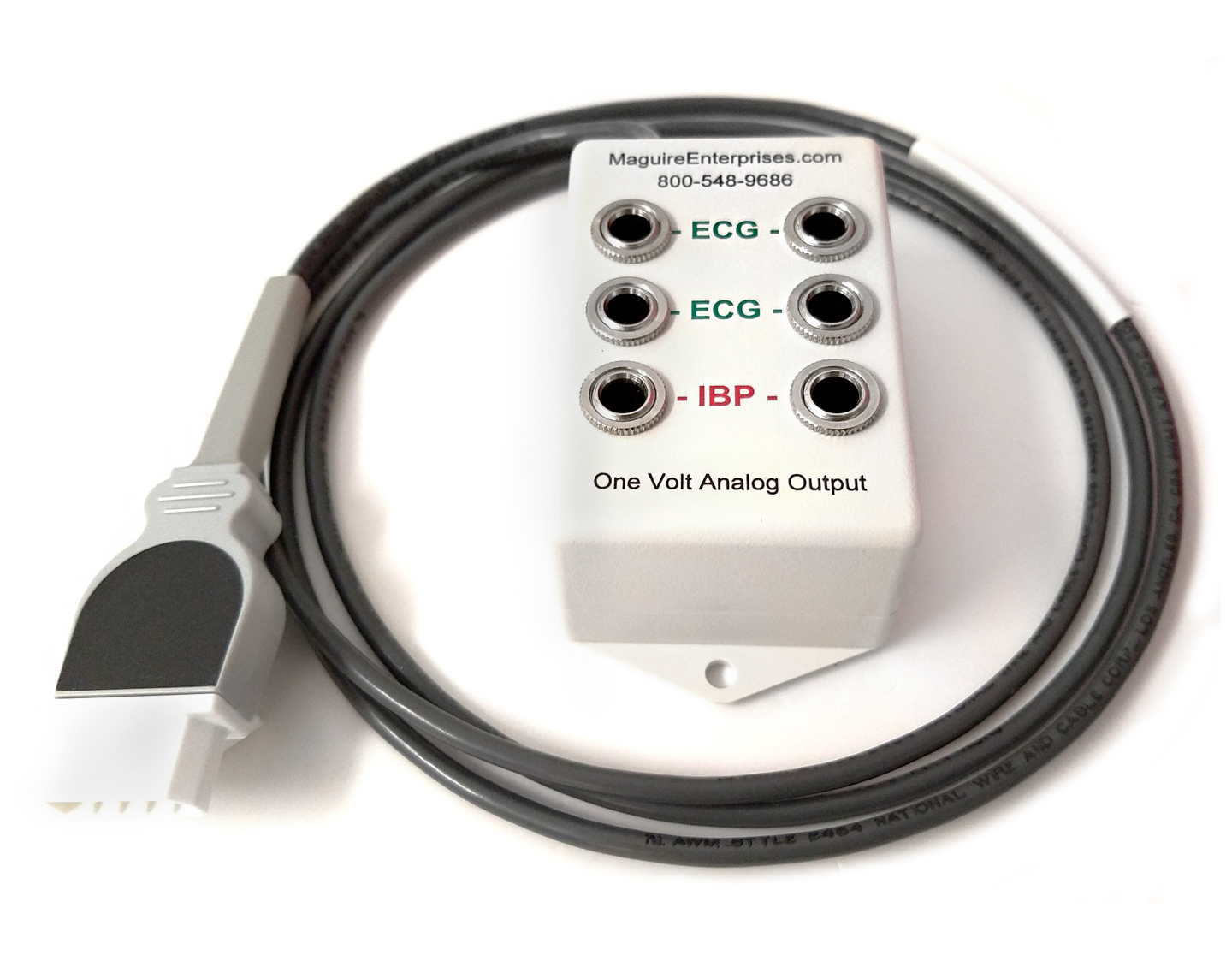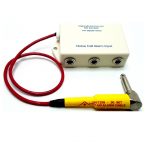 Click to view and download .pdf of Maguire’s options for adapting the ECG – IBP inputs of the defibrillator.
Click to view and download .pdf of Maguire’s options for adapting the ECG – IBP inputs of the defibrillator.
 Click to view and download .pdf of Maguire’s options for adapting the ECG – IBP inputs of the defibrillator.
Click to view and download .pdf of Maguire’s options for adapting the ECG – IBP inputs of the defibrillator.
 Click to view and download .pdf of Maguire’s Interconnect Cables for Philips Healthcare monitors and ultrasounds
Click to view and download .pdf of Maguire’s Interconnect Cables for Philips Healthcare monitors and ultrasounds
 Click to view and download .pdf of Maguire’s Interconnect Cables for STRYKER Physio-Control Lifepak Defibs
Click to view and download .pdf of Maguire’s Interconnect Cables for STRYKER Physio-Control Lifepak Defibs
Installation instructions:
Our cable products achieve reliable signal transfer
between new and existing devices and systems in the following ways:
Interconnect/Sync Solutions: This line of products is used in the CVOR, Cath/EP Labs and Hybrid ORs; areas that routinely require ECG and IBP signal transfer between physiologic monitoring devices.
Device Alarm Nurse Call Solutions: This line of products is routinely used in areas where the patient is connected to critical devices and physiologic monitors; equipment that must transfer audible alarms through to the central nurses station.
Use our cables, adapter and multipliers to:
*Solve unique equipment combinations for slaved ECG & IBP connections between diverse manufactured devices.
*Multiply the analog output of a monitoring device and enable remote display onto numerous peripheral devices: 4 ECG and 2 Blood pressure waveforms provided.
*Adapt a device’s patient input to accommodate the cables from other manufactured devices.

Use our cables, adapters and multipliers to:
* Transfer alarm signal from a critical device through the hospital’s nurse call system via the headwall jack near the patient’s bedside.
* Multiply a single alarm input at the headwall jack to accommodate multiple devices; turning the average room in a more intensive care unit.
* Allow audible alarms at the central nurses station to be promptly addressed by staff.

Trust MAGUIRE’s 50 years of Health Technology Experience to deliver peace of mind!
~ Click the OEM logo above to view a list of related product solutions ~
Considerations When Using Interconnect Cables with Medical Devices
Devices may include: Monitors, Monitor/Defibrillators, Ultrasound, Balloon Pumps, etc.
Introduction
Some hospital customers may wish to interface the defibrillator/monitor to other medical devices. Commonly referred to as “slaving”, the patient’s ECG signal is cabled from the analog output of one device to the patient input of another, for the purposes of remote monitoring. This document describes typical interconnection schemes, and clearly defines inappropriate uses.
Review: What is Synchronized Cardioversion?
With the SYNC mode selected on the defibrillator/monitor, each QRS complex the patient produces is identified and marked. The defibrillator only allows delivery of a shock immediately after a QRS complex is detected. In patients with certain arrhythmia, administering a random counter shock carries the risk of inducing ventricular fibrillation. In such cases, synchronized cardioversion is usually indicated. A defibrillation shock delivered during the vulnerable period of the cardiac cycle may actually cause ventricular fibrillation.
The Association for the Advancement of Medical Instrumentation (AAMI) recommends that defibrillators operating in synchronized mode deliver the synchronized shock prior to 60 ms after the peak of the R wave. Since the vulnerable period immediately follows this 60 ms “window”, delivery of the shock must not occur more than 60 ms after the peak of the R wave.
Review: What is Noninvasive Pacing
The defibrillator/monitor is primarily used as a demand-mode pacer, which delivers pacing therapy based on the ECG signal acquired through its patient cable. Placing another device in the ECG signal path may result in unexpected distortions of the pacer-driven ECG waveform, which may, in turn, affect pacing therapy.
“Slaving” another device from the analog output of a defibrillator/monitor
When a defibrillator/monitor is used in conjunction with another device, the clinical staff may want to view the patient’s ECG signal on all units. A typical connection would allow the patient to be connected to the defibrillator/monitor plus have the ability to quickly interconnect a cable to the input of another device(s). This is the currently preferred method for synchronized Cardioversion or pacing.
“Slaving” The Defibrillator/monitor from the analog output of another device.
It may be impractical or undesirable to place additional monitoring electrodes on the patient. This “slaving” is a convenient method If you desire to also view the ECG waveform on the defibrillator/monitor, however, the delivery of Synchronized Cardioversion therapy or pacing with devices interconnected in this fashion can result in specific patient risks thus should not be done. To use the defibrillator/monitor during a cardioversion procedure or pacing, the patient cable must be connected directly to the defibrillator/monitor.
Noninvasive Pacing
IMPORTANT: The defibrillator/monitor should not be slaved from the analog output of another device when used for pacing. When pacing, the defibrillator/monitor must be connected directly to the patient through the patient cable.
Patient Risk Current
When interconnecting medical equipment, chassis leakage or risk currents may be increased. To ensure patient safety, the hospital biomedical staff should perform electrical safety testing on the complete system to ensure that safe current limits are not exceeded.
Considerations when using ECG Interconnect Cables, Published by Maguire Enterprises, Inc. 2018
Cable Availability
For assistance in acquiring the appropriate cables, contact MAGUIRE Enterprises at 800-548-9686 or visit our website to view our on-line catalog . Be prepared to provide the manufacturer and model number of the bedside monitor and defibrillator to be used. Patient cable input adapters are also available, allowing the monitor cable to be plugged into the defibrillator, even if the original connectors were non compatible.